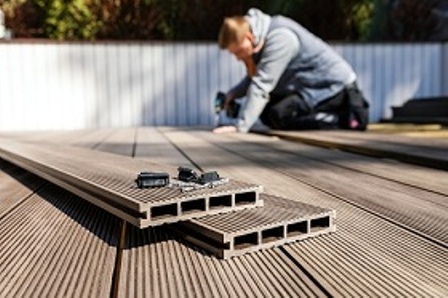Are you planning to breathe new life into your outdoor space with a deck? Whether it’s a new build or a refurbishment, composite decking is a reasonable choice. This material offers durability and low maintenance, making it a practical alternative to natural wood.
Undertaking such a project requires careful consideration of various aspects. Among these, the selection of quality composite materials is crucial, as it can significantly influence the longevity and performance of your deck.
Here are some tips to make the best selection for your project:
Consider Your Climate
When planning your deck, it’s vital to consider the impact of your local climate. The performance of your composite decking can be significantly influenced by temperature extremes, moisture, and sun exposure.
- Hot, Arid Climates: In these conditions, decking materials undergo more expansion and contraction. Opt for composites with high heat tolerance if providing maximum shade isn’t feasible.
- Wet, Humid Environments: Use composites treated with mold-inhibiting formulas to prevent fungal growth, which is common in this type of environment. Additionally, choose materials that repel moisture instead of absorbing it, to further enhance the deck’s resistance to dampness.
- Cold Climates: Some composites can become more brittle in freezing temperatures. Select cold-resistant materials if usage during winter is a priority.
- Sunny Areas: To protect your deck from fading and degradation caused by ultraviolet rays, choose composites with UV inhibitors.
By matching your composite deck boards to your local conditions, you can ensure they stand the test of time. Remember, a well-planned deck is a long-lasting one.
Evaluate The Decking Material’s Composition
When choosing your decking materials, it’s essential to evaluate the composition. This can affect its strength, rigidity, expansion, and other factors. Here are some options to consider:
- Polyethylene: This material offers flexibility, stain/fade resistance, and mold/mildew protection. However, it can scratch more easily under furniture.
- Polypropylene: Known for its high dent-resistance and recyclability, polypropylene is a great choice. Keep in mind that it retains heat more than other plastics.
- Lumber/Plastic Composites: These materials blend wood fibers, plastics, and binders to mimic the look of wood. They offer good value but may have less durability than plastic composites.
- Capped Composites: These composites have a protective shell surrounding the core for enhanced performance. The cap material can impact features like slip resistance and stain prevention.
The composition of your decking material will also determine its duty rating, indicating its appropriate uses from residential to commercial. Choose wisely to ensure your deck stands the test of time.
Assess The Decking Material’s Appearance
Aside from the composition, it’s equally important to assess the decking material’s appearance. Modern composites can replicate the look of natural, stained, and even exotic woods.
Here are some aspects to consider:
- Visual Attributes: Examine hue, grain patterns, streaking, and color variations in samples under different lighting conditions to get a true representation of their appearance.
- Texture Comparison: Consider how the scale and shape of the embossing on the composite material compares to real wood textures.
- Unified Look: Ensure transition pieces and railings match with the main decking material for a cohesive finish.
- Exterior Harmony: Visualize how the chosen colors and patterns will complement your home’s exterior, thus adding curb appeal.
Balancing realistic aesthetics with decking material performance is crucial to bringing your vision to life within your budget.

Compare Different Brands
When choosing composite decking materials, it’s wise to compare brands. Established brands certified by organizations like the Composite Lumber Manufacturers Association signify reliable quality. These brands have proven track records and are often recognized for their commitment to quality and performance.
Furthermore, reputable brands offer a range of products to suit different needs and budgets. They also provide comprehensive warranties and excellent customer service. So, take the time to research and compare to find the brand that best suits your specific needs and preferences.
Inspect Installation Needs
Whether you’re a professional contractor or considering a DIY approach, the accessibility and feasibility of the installation process should be taken into account. Look into the following:
- Hidden Fasteners: These simplify the installation of grooved boards without visible screws. However, they may require specialized tools.
- Lightweight Planks: Opting for lighter-weight planks can reduce strain when lifting and carrying materials.
- Interlocking Boards: Boards with ends designed to tightly interlock vertically can help resist gapping.
- Matching Pieces: Using matching fascia (the board covering the deck frame) and riser (the vertical part of a step) pieces can result in seamless, finished edges.
- Pre-Drilled Holes: Boards with pre-drilled holes for lag screws can make attaching to joists easier.
By considering these factors, you can ensure a smooth installation process, whether you’re a seasoned professional or a first-time DIYer. It goes without saying that a well-planned project is a successful project.
Final Thoughts
Choosing the right composite decking is a significant decision, but with the right information, it becomes a manageable task. The deck you build will reflect your careful planning and selection. So, go ahead and make your choice with confidence. Your perfect deck awaits!

